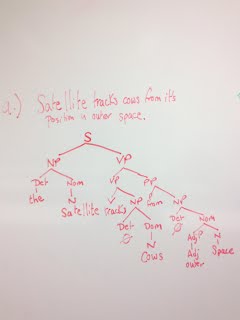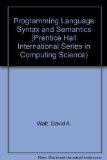Semantics is a branch of

Changes in the study of semantics
In the last twenty-to-thirty years there have been changes in the traditional ways of studying semantics.
Chomskian linguistics and the nativist view sees all semantic notions as inherent. However, this view was thought of as being unable to address many issues such as metaphor and semantic change, where meanings within linguistics change over time.
On the other hand, cognitive linguistics views semantics, as an innate finite meaning inherent in a lexical unit which can be used to generate meaning. This challenge to the traditional Chomskian views is motivated by factors external to language, i.e. language is not a set of labels stuck onto things but "a toolbox, the importance of whose elements lie in the way they function rather than their attachments to things."[2]
One tool used in the study of Semantics: Syntax trees
Semantics also uses our theoretical knowledge of how language works on a broader level to explain and formally note how meaning works. We can present how words are arranged in utterances through drawing syntax trees- this may sound strange but hopefully the video below will help to show you one way semantics can be studied.Syntax Trees
Photo of the material discussed in the videoIf you'd like to have a closer look at the structurally ambiguous sentence and its paraphrases and trees that were discussed in the video please take a look at the photos below. (Click to enlarge)Please follow the links below to other sections of the web site if you'd like to find out more about the topics covered in the video.
You might also like



|
Ontological Engineering: with examples from the areas of Knowledge Management, e-Commerce and the Semantic Web. First Edition (Advanced Information and Knowledge Processing) Book (Springer)
|
|

|
Programming Language Syntax and Semantics (Prentice-Hall International Series in Computer Science) Book (Prentice Hall)
|





